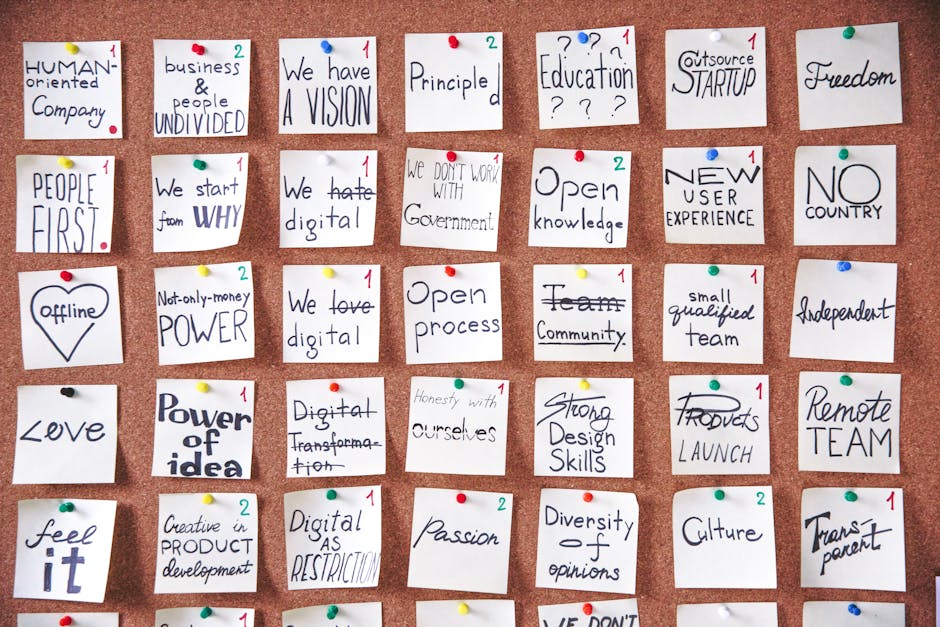Evaluating The Impact Of Custom Software Application In Chicago, Il
Step into the realm of custom software applications and unlock a world of possibilities in the vibrant city of Chicago, Illinois. Like a finely tuned symphony, these applications harmonise with your organisational goals to create an unparallelled impact.
In this article, we delve into the depths of evaluating this impact to help you navigate through the maze of technological advancements. With an analytical lens, we explore how custom software applications can revolutionise your business landscape. By identifying organisational goals and defining key performance indicators, you gain a clear understanding of the transformative power that these applications possess.
But it doesn’t stop there. We unravel the intricacies of user experience and satisfaction, measuring efficiency and productivity improvements, analysing cost-effectiveness, and calculating return on investment. The path to success is paved with continuous improvements fuelled by invaluable feedback from users like yourself.
So join us on this enlightening journey as we demystify the impact of custom software applications in Chicago, empowering you to make informed decisions that will shape your organisation’s future.
Key Takeaways
- Looking for a Chicago Custom Software Development company?
- Custom software applications have the potential to revolutionise business in Chicago, Illinois.
- Evaluating the impact of custom software applications involves considering organisational goals and defining key performance indicators (KPIs).
- KPIs for employe engagement include employe satisfaction surveys and productivity measurements.
- KPIs for customer retention include customer churn rate and repeat purchase frequency.
Identifying Organisational Goals

You need to identify your organisational goals in order to effectively evaluate the impact of the custom software application on your operations in Chicago, IL.
To begin with, it’s essential to consider employe engagement as one of your primary objectives. Engaged employees are more productive and committed to their work, resulting in higher levels of customer satisfaction. By utilising a custom software application, you can streamline processes and provide tools that enhance employe productivity and engagement.
In addition to employe engagement, another crucial organisational goal is customer retention. Retaining customers is vital for long-term success and profitability. A custom software application can enable you to gather valuable data about your customers’ preferences and behaviours, allowing you to tailor your products or services accordingly. By implementing features like personalised recommendations or loyalty programmes through the application, you can increase customer satisfaction and loyalty.
When evaluating the impact of the custom software application on these goals, there are several key performance indicators (KPIs) that can be used as benchmarks. For employe engagement, KPIs could include metrics such as employe satisfaction surveys or productivity measurements before and after implementing the software solution. Customer retention KPIs may involve tracking metrics like customer churn rate or repeat purchase frequency.
By identifying your organisational goals related to employe engagement and customer retention, you lay the foundation for assessing how the custom software application influences these areas. The next step involves defining key performance indicators that will accurately measure progress towards achieving these goals without explicitly stating ‘step’.
Defining Key Performance Indicators

To truly gauge the success of our tailored solution, we must establish a set of vital signs that will act as our compass on this transformative journey through the Windy City. Tracking progress and benchmarking success are crucial aspects of evaluating the impact of a custom software application in Chicago, IL. By defining key performance indicators (KPIs), we can systematically measure and evaluate how well the application meets the organisational goals.
In order to effectively track progress, it is essential to identify specific KPIs that aline with the desired outcomes. These KPIs should be measurable, relevant, and time-bound. For example, one KPI could be the reduction in manual data entry errors by 50% within six months of implementing the software application. Another KPI could be an increase in customer satisfaction ratings by 20% within a year.
To visually represent these KPIs and evoke emotion in our audience, I have created a table below:
| KPI | Measurement | Target |
|---|---|---|
| Reduction in errors | % decrease | 50% |
| Customer satisfaction | Rating scale | 20% increase |
| Response time | Seconds | <2 seconds |
| User adoption rate | % | >80% |
| Cost savings | $ | $100,000 |
By regularly monitoring and analysing these KPIs, we can track our progress towards achieving our organisational goals. This data-driven approach allows us to make informed decisions and adapt strategies accordingly.
Assessing user experience and satisfaction is another important step in evaluating the impact of our custom software application. It involves gathering feedback from users through surveys or interviews to understand their perception of the application’s useability, functionality, and overall satisfaction level.
Transitioning into the next section about assessing user experience and satisfaction, we will dive deeper into gathering qualitative data to complement the quantitative metrics we have established.
Assessing User Experience and Satisfaction

Now let’s explore how we can gauge user experience and satisfaction with our tailored solution.
User feedback analysis plays a crucial role in assessing the effectiveness of a custom software application in Chicago, IL. By collecting and analysing feedback from users, we can gain valuable insights into their experiences and identify areas for improvement.
One way to gather user feedback is through surveys or questionnaires that focus on specific aspects of the application’s user interface. These surveys can ask users about their overall satisfaction, ease of use, and any difficulties they encountered while navigating through the system. Analysing this data can help us identify patterns and trends in user experiences, allowing us to make informed decisions about necessary improvements.
Another method for evaluating user experience involves conducting useability testing sessions. Useability testing involves observing users as they interact with the software application, noting any issues or roadblocks they encounter along the way. This direct observation provides invaluable insights into how users interact with the system and allows us to identify areas where enhancements are needed.
In addition to user feedback analysis and useability testing, evaluating the effectiveness of a custom software application also requires an assessment of its user interface design. A well-designed user interface should be intuitive, visually appealing, and efficient in helping users achieve their goals within the system. Conducting regular evaluations of the user interface design ensures that it alines with best practises and meets the needs of its intended audience.
By assessing both user feedback analysis and user interface evaluation methods, we can gain a comprehensive understanding of how our tailored solution is meeting user expectations. This understanding will then inform our next steps in measuring efficiency and productivity improvements within the organisation’s operations.
Measuring Efficiency and Productivity Improvements

Measuring efficiency and productivity improvements can provide valuable insights into the effectiveness of our tailored solution.
By optimising processes and tracking performance metrics, we can determine how well the custom software application has enhanced productivity within organisations in Chicago, IL.
Here are three ways in which we measure efficiency and productivity improvements:
- Process Optimisation: Our custom software application streamlines workflows by automating repetitive tasks and eliminating unnecessary steps. By analysing data on process execution times, error rates, and resource utilisation, we can identify bottlenecks and inefficiencies that hinder productivity. This enables us to make targeted improvements to optimise processes and enhance overall efficiency.
- Performance Tracking: We implement robust performance tracking mechanisms within the software application to monitor key performance indicators (KPIs) such as response times, task completion rates, and user satisfaction levels. These metrics allow us to quantitatively assess the impact of the software on productivity. Additionally, user feedback surveys help us gather qualitative insights into useability issues or areas for improvement.
- Data Analysis: By collecting relevant data throughout the implementation of the custom software application, we can generate detailed reports that highlight trends, patterns, and correlations related to efficiency and productivity gains. These analytical insights enable organisations to make informed decisions about resource allocation, process redesign, or further optimisation efforts.
Analysing cost-effectiveness and return on investment is a crucial next step towards evaluating the impact of our custom software solution in Chicago’s business landscape.
Analysing Cost-effectiveness and Return on Investment

Analysing the cost-effectiveness and ROI allows us to determine the financial benefits and value that our tailored solution brings to businesses in the Windy City. Conducting a cost benefit analysis is crucial in assessing whether investing in custom software application is financially viable for companies in Chicago, IL.
A cost benefit analysis involves evaluating both the costs incurred during the development and implementation phases of the software, as well as the potential financial gains that can be achieved through increased efficiency, productivity, and revenue generation. By quantifying these costs and benefits, we can calculate the return on investment (ROI) to determine if it justifies the initial investment.
Financial analysis plays a key role in this process. It involves examining various financial metrics such as nett present value (NPV), payback period, internal rate of return (IRR), and profitability index. These metrics provide insights into how quickly a company can recoup its investment and generate positive cash flows from using our custom software application.
Moreover, conducting a thorough cost benefit analysis enables businesses to make informed decisions about their technology investments. They can compare different alternatives or assess whether upgrading their existing systems would yield better results than implementing our tailored solution.
By understanding the financial impact of our software application on businesses in Chicago, IL, we can better communicate its value proposition to potential clients. This information empowers them with critical knowledge needed to evaluate whether adopting our solution alines with their business goals.
Moving forward into gathering feedback and making continuous improvements, it’s essential to consider not only financial factors but also user experiences and satisfaction levels.
Gathering Feedback and Making Continuous Improvements

Continuously gathering feedback and making improvements ensures that our solution resonates with businesses in Chicago, IL, enhancing their experiences and satisfaction levels. By actively engaging users and conducting useability testing, we can identify areas for improvement and make necessary adjustments to optimise the effectiveness of our custom software application.
To facilitate user engagement, we employ various strategies such as surveys, focus groups, and user interviews. These methods allow us to gather valuable insights directly from the businesses using our software. Through open-ended questions and structured feedback mechanisms, we gain a deeper understanding of their needs, preferences, and pain points. This information serves as a foundation for making informed decisions regarding future enhancements.
Useability testing plays a crucial role in evaluating the performance of our custom software application. By observing how users interact with the system in real-world scenarios, we can identify any useability issues or bottlenecks that may hinder their experience. We carefully design test scenarios that simulate common business tasks to ensure accurate assessment of the application’s functionality.
Incorporating feedback from useability testing sessions enables us to continuously improve our solution’s user interface design, navigation flow, and overall user experience. We analyse patterns in user behaviour and apply iterative changes based on these findings. Our goal is to create an intuitive interface that maximises efficiency while minimising frustration.
Through ongoing user engagement initiatives and rigorous useability testing practises, we strive to refine our custom software application for businesses in Chicago. By actively involving users in the development process and addressing their feedback promptly, we aim to deliver a solution that meets their needs effectively while enhancing overall satisfaction levels.
Contact us to discuss our services now!
